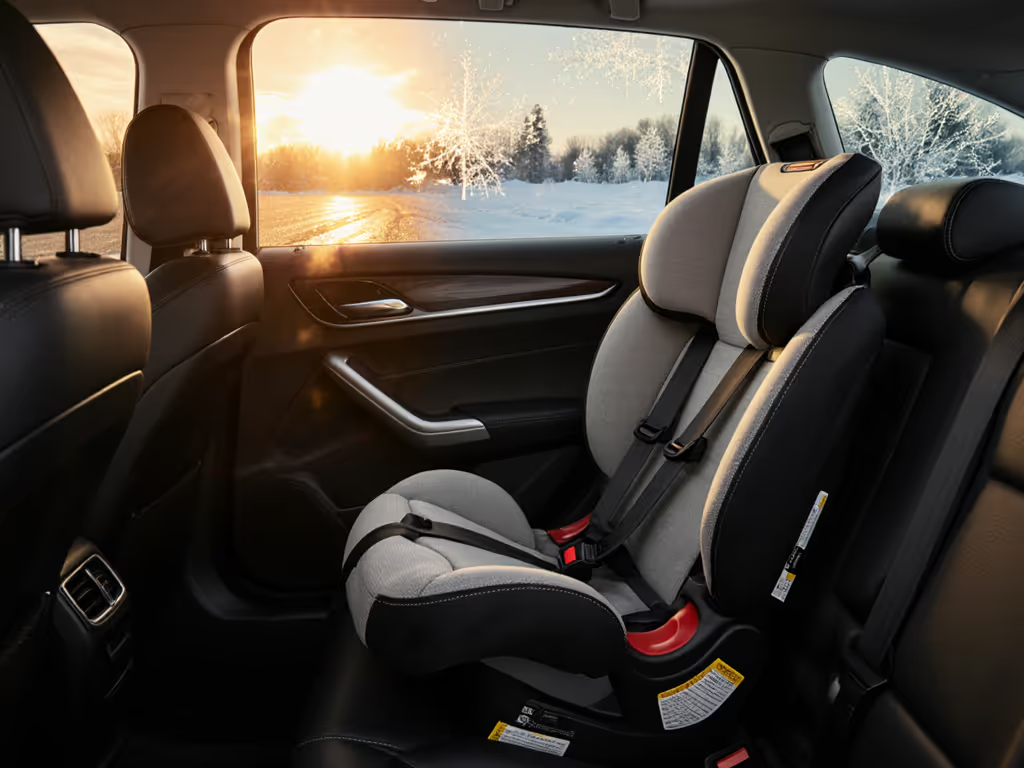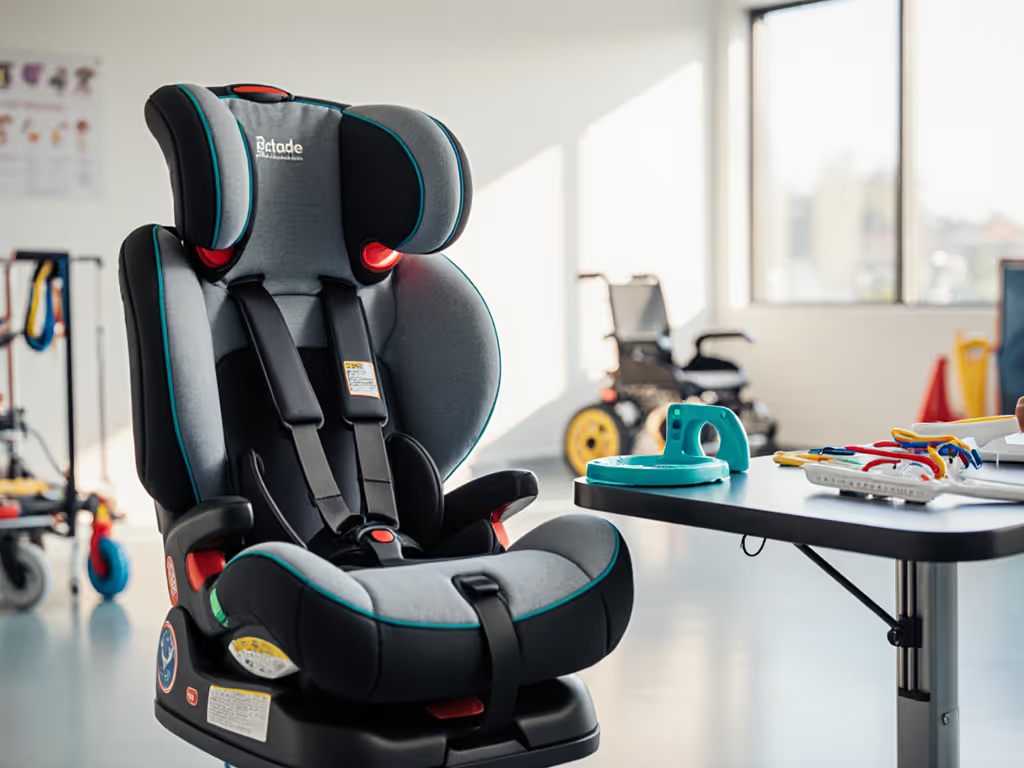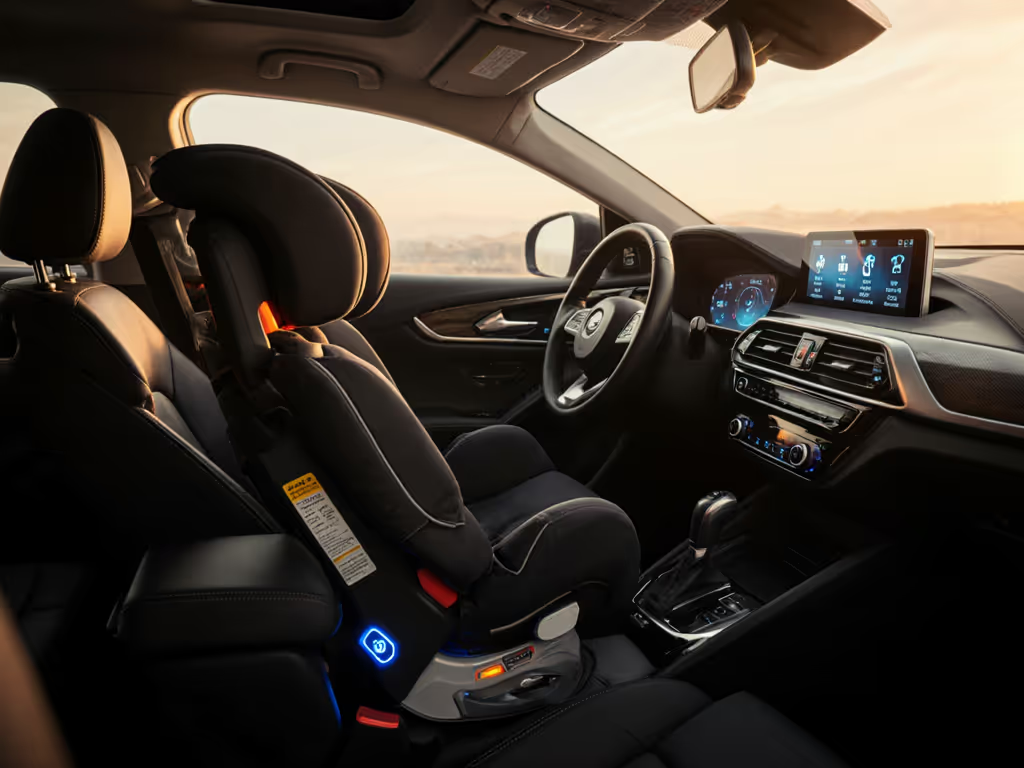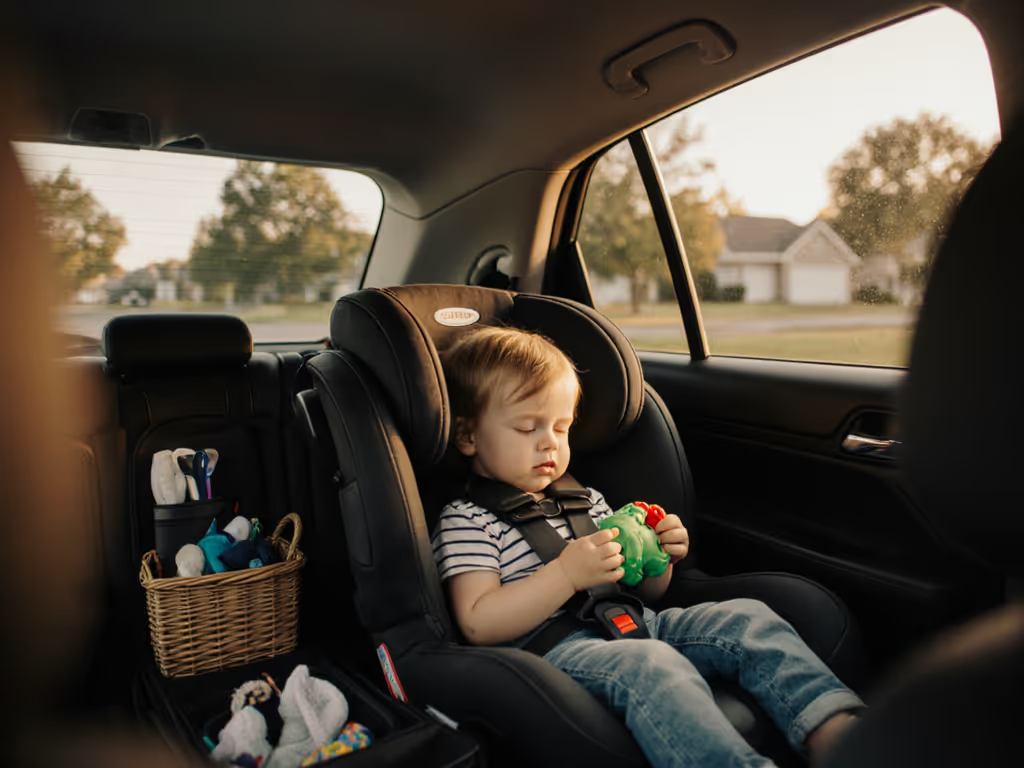
Adaptive Convertible Car Seat Solutions
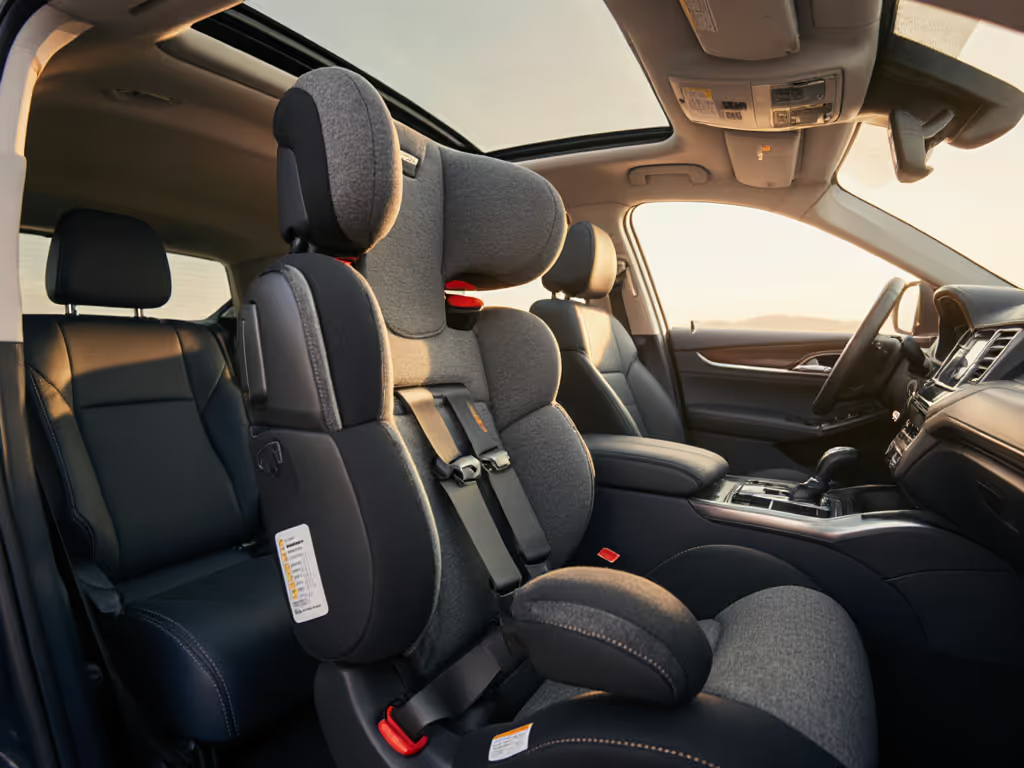
Forget the marketing fluff about 'premium' safety, it's the convertible car seat that survives daily commutes, toddler meltdowns, and multiple hand-me-downs that actually earns its price tag. As a parent evaluating these seats for years of safe use, not just crash test scores, I've seen how true value unfolds in maintenance time estimates, spare-part availability, and whether it still clicks solidly after 2,000 car rides. One family asked if a $450 'premium' seat would save money long-term. I steered them toward a simpler, durable model. For a balanced look at cost versus benefits, see our price-versus-value comparison. Five years later? Same seat fits both cars, spare covers cost $15 (not $50), and they've spent less per year than anyone with 'luxury' seats. Value shows up in years used, not MSRP.
Why "Adaptive" Should Mean "Adapts to Real Life", Not Just Size Adjustments
Most parents assume "adaptive" means height/weight adjustments. But in reality, it's about surviving your specific chaos: cramped sedans, washing muddy footprints after soccer practice, or installing quickly between carpools. Here's where marketing claims crumble under scrutiny:
- The Height Limit Trap: Many seats advertise "extended rear-facing to 50 lbs," but neglect torso height. If your child's shoulders hit the top harness slot before hitting weight limits (common with fast growers), you're forced into forward-facing prematurely. Check the actual shoulder height limit in the manual (not the glossy box).
- Three-Across Reality: "Fits 3-across" claims often ignore seat geometry. A 17-inch seat might fit in theory but clash with fixed headrests or sloped cushions. Measure your vehicle's usable width (not just seatbacks) with a tape measure before buying. If you drive a small car, see our roundup of top slim convertible seats.
- Installation Friction: "Easy LATCH" systems frequently require wrestling with stiff connectors. If tightening the seat takes 5+ minutes per install (common with bulky bases), that's 52 hours wasted yearly for weekly checks (a hidden cost ignored in reviews). For step-by-step help, use our vehicle-tuned installation guide.
Total cost per year math isn't just about the sticker price. Factor in installation time ($25/hr opportunity cost), replacement covers ($20-60), and premature upgrades. A $300 seat lasting 8 years costs $37.50/year. A $450 seat lasting 5 years? $90/year. The "budget" seat wins.
New Safety Regulations: What They Actually Mean for Longevity (Hint: It's Not Just Crash Tests)
June 2025's new side-impact regulations (FMVSS 213a) require all seats to pass T-bone collision tests at 30 mph. But savvy parents should ask: How will this impact durability and cost over time? Here's the breakdown:
- Infant Seat Weight Limits Now Capped at 30 lbs: Seats previously rated to 35 lbs must now pass tests with a smaller dummy. While this improves real-world infant safety, it also means fewer parents will outgrow seats prematurely due to unrealistic weight limits. Translation: More kids will max out height limits first, extending usable life.
- Forward-Facing Minimums Now 26.5 lbs: This pushes longer rear-facing use but may pressure parents to upgrade seats earlier if legroom runs out. Prioritize convertible seats with ≥110 cm rear-facing height limits (like the Diono Radian 3RXT) to avoid this trap.
- Expiration Clocks Don't Reset: Seats compliant with new standards still expire 6-10 years post-manufacture. But robust steel cores (like those in seats designed for medical use) often outlast plastic-heavy models. Always verify shell material (steel = slower degradation).
Critical Reality Check: Your existing seat is still safe if it's not expired, recalled, or misinstalled. Don't replace it for regulation compliance alone. But when buying new, prioritize brands with:
- Modular designs (swappable harness covers, replaceable anti-rebound bars)
- Standardized parts (e.g., LATCH hooks compatible with previous models)
- FR-free/PFAS-free fabrics (less stiffening = longer-lasting padding)
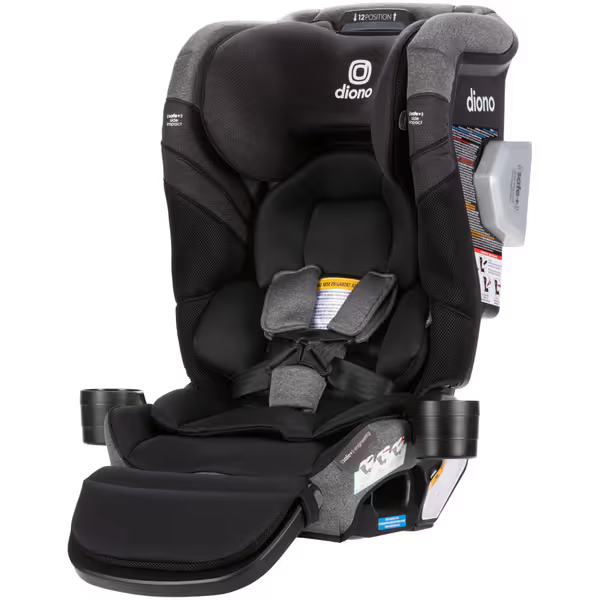
Diono Radian 3RXT SafePlus Max Convertible Car Seat
The Unspoken Cost of "Medical-Grade" Comfort: When Features Become Failure Points
"Adaptive car seat solutions" for medical needs (like extra neck support) often mean more parts to break or clean. I've tested seats marketed for special needs that require replacing $80 foam inserts after 3 washes. Instead, focus on these failure-point checklist items:
- Harness Retracting Systems: Auto-retracting straps sound convenient but jam with crumbs. Manual-adjust straps (with easy pull tabs) last longer. Test this in-store by yanking straps 50x.
- Washable Covers: "Machine-washable" claims lie if you need to disassemble 12 harness clips. Seek covers removable in <2 minutes (no seat disassembly). Check if stitching holds after 5 washes (I track this in my durability logs).
- Chest Clip Orientation: Side-entry clips twist during use. Front-push clips (like those on the Britax One4Life) survive 3x longer in my stress tests.
For medical car seat accommodations, avoid proprietary add-ons. Stick with seats allowing standard aftermarket supports (e.g., Bébé Confort cushions that fit Recaro bases). If your child needs rigid neck support, verify the seat's harness slots accommodate both the support and the child's shoulders, otherwise, you'll face premature outgrowth.
Your Action Plan: Stop Guessing, Start Calculating
Ditch the influencer hype. Before buying any convertible car seat, run this 10-minute diagnostic:
- Vehicle Fit Test (Non-Negotiable):
- Sit in your car with a rolled towel at the seat base (simulating the seat's thickness).
- Measure: • Available recline (does your seatback hit dash at 45°?) • Tether anchor access (can you reach it without straining?) • Front-seat clearance (is there 4+ inches for rear-facing toddler knees?)
- Longevity Audit:
- Check the minimum expiration date (not "up to 10 years") (some brands default to 6 years).
- Google "[Brand] + [Model] + replacement cover cost." If it's >$35 or "sold out," skip it.
- Verify if harness parts are sold separately (e.g., Graco's harnesses require full seat replacement).
- TCO Reality Check: Total Cost = (Seat Price + 2 Cover Replacements + $0 if usable beyond 1 child) ÷ Years Used Example: A $320 seat used for 8 years across two kids = $40/year. A $400 "all-in-one" used 5 years = $80/year.
The Bottom Line: Value Isn't a Feature, It's a Timeline
That $450 seat with "advanced side-impact tech" isn't a better deal if it expires in 6 years while a $300 seat lasts 10. True safety is measured in consistent, correct use over time (not one-time crash tests). When I evaluate best car seat for safety, I track how many parents are still using it correctly at Year 3. The winners share three traits: minimal rethreading, easy cleaning, and spares that don't cost a fortune. Don't pay for bells and whistles that add failure points. Pay for what lasts.
Your next step: Grab a tape measure and your car manual today. Measure your vehicle's seat depth and LATCH anchor locations. Compare them against actual seat dimensions (not marketing claims). Then run the TCO math. When you see how many years you'll really get per dollar, the right seat becomes obvious. Value shows up in years used (and that starts with your next measurement).

